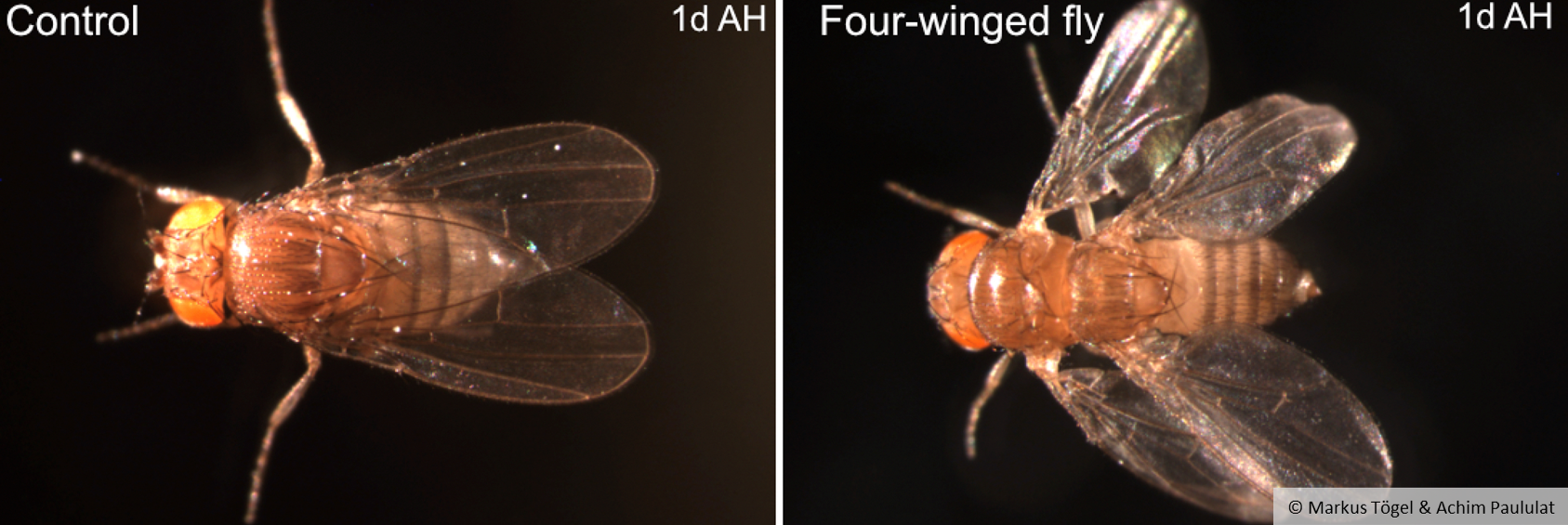Main content
Top content

A wild-type fruit fly with two wings (left) and a Ubx mutant with four wings (right).
15.06.2022
Flies with four wings – and four wing hearts
How many wings does a fly actually have? Their affiliation to the order "Diptera" gives it away – the answer is two. But there are exceptions: A mutation in a certain gene can cause flies to develop an additional pair of wings. In a recent study, researchers from Osnabrück Biology investigated how this anatomical peculiarity develops.
Within insects we find species without wings (jumping bristletails), species with two wings (e.g. mosquitoes) and species with four wings (e.g. dragonflies and butterflies). Flies belong to the second group, they are dipterans and usually have one pair of wings. However, in the 1980s, geneticist Edward Lewis studied fruit flies that possessed an additional pair of wings. He found that these animals carried a mutation in the so-called Ultrabithorax gene (Ubx). This codes for a transcription factor that plays a key role in development: It decides the fate of cells during embryonic development - i.e., it determines which tissues or organs will later emerge from them. Lewis was awarded the Nobel Prize for his discoveries in 1985.
Together with Markus Tögel from Oxford and Günther Pass from Vienna, Osnabrück zoologist Achim Paululat has now investigated how the four wings develop in fruit flies with said mutation. The team found that the internal organs are also formed twice. For example, the Ubx flies have two additional small wing hearts, which provide the blood flow and thus facilitate the error-free formation of the additional pair of wings. However, the four-winged fruit flies cannot fly - because they are not able to control the movements of the additional wings. By the way, the Ubx gene is not only found in flies. Ernest Hemingway's famous cats, with their 6 toes on each paw, carried a Ubx mutation in their genome. And also in humans, mutations in the Ubx gene can lead to extra fingers, toes or ribs.
The research team's findings were recently published in the prestigious journal “Genetics”: Tögel, M.; Pass, G. & Paululat, A. (2022): Wing hearts in four-winged Ultrabithorax-mutant flies—the role of Hox genes in wing heart specification. Genetics 220.
Contact: Prof. Dr. Achim Paululat







